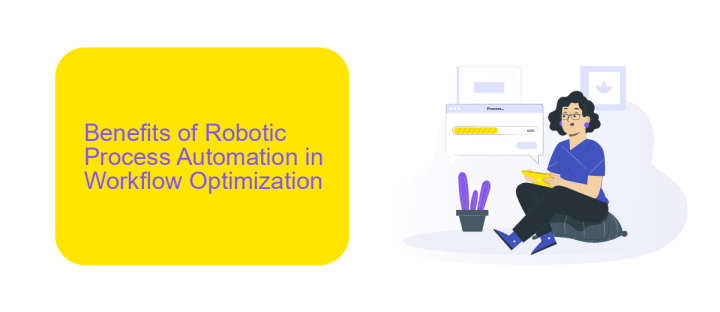Robotic Process Automation Workflow
Robotic Process Automation (RPA) is revolutionizing the way businesses operate by automating repetitive and mundane tasks. This technology allows organizations to streamline workflows, reduce errors, and increase efficiency. In this article, we will explore the intricacies of RPA workflows, their benefits, and how they can be effectively implemented to enhance operational productivity and drive business growth.
Introduction to Robotic Process Automation
Robotic Process Automation (RPA) is a technology that enables the automation of repetitive and rule-based tasks, freeing up human workers to focus on more strategic activities. By mimicking human actions, RPA software robots can interact with various digital systems and applications just like humans do, but with greater speed and accuracy.
- Reduces operational costs by minimizing human error.
- Increases efficiency and productivity by automating mundane tasks.
- Enhances compliance by ensuring consistent execution of processes.
- Scales easily to accommodate business growth and changing needs.
One of the key benefits of RPA is its ability to integrate with existing systems without the need for extensive changes. Tools like ApiX-Drive facilitate seamless integration by connecting different applications and automating workflows. This not only simplifies the implementation process but also ensures that businesses can quickly reap the benefits of RPA without significant downtime or disruption.
Benefits of Robotic Process Automation in Workflow Optimization

Robotic Process Automation (RPA) significantly enhances workflow optimization by automating repetitive tasks, thereby freeing up human resources for more strategic activities. This leads to increased efficiency and productivity as RPA can operate 24/7 without fatigue, ensuring tasks are completed faster and with fewer errors. By minimizing manual intervention, companies can achieve a more streamlined and consistent workflow, which ultimately improves overall operational performance.
Moreover, RPA facilitates seamless integration between various systems and applications. Tools like ApiX-Drive enable businesses to effortlessly connect different platforms, ensuring smooth data transfer and communication. This not only reduces the complexity of managing multiple systems but also enhances data accuracy and accessibility. As a result, organizations can make more informed decisions based on real-time data, further optimizing their workflows and driving business growth.
Key Steps in Implementing Robotic Process Automation

Implementing Robotic Process Automation (RPA) involves several critical steps to ensure a smooth and effective deployment. The process begins with identifying suitable processes for automation by evaluating their complexity, volume, and potential for error reduction. Once identified, the next step is to design the RPA workflow, detailing each step the robot will perform.
- Process Identification: Select processes that are repetitive, rule-based, and high-volume.
- Workflow Design: Map out the tasks and decisions the RPA will handle.
- Tool Selection: Choose the appropriate RPA tool that fits your needs.
- Development and Testing: Build the RPA scripts and test them in a controlled environment.
- Integration: Use services like ApiX-Drive to integrate RPA with existing systems seamlessly.
- Deployment: Roll out the RPA solution in the live environment.
- Monitoring and Maintenance: Continuously monitor the RPA performance and make necessary adjustments.
By following these steps, organizations can effectively implement RPA to streamline operations, reduce errors, and increase efficiency. Proper planning and execution are crucial for maximizing the benefits of RPA technology.
Challenges and Best Practices in Robotic Process Automation Workflow

Implementing Robotic Process Automation (RPA) workflows can be a daunting task due to various challenges. One common issue is the complexity of integrating RPA with existing systems, which often requires significant time and technical expertise. Additionally, ensuring the scalability and flexibility of the RPA solution to accommodate future changes is crucial but challenging.
Another significant challenge is maintaining data security and compliance, as RPA often deals with sensitive information. Organizations must ensure that their RPA workflows adhere to regulatory standards and protect data from potential breaches.
- Thoroughly analyze and document existing processes before automation.
- Use reliable integration services like ApiX-Drive to streamline system connectivity.
- Implement robust security measures to protect sensitive data.
- Continuously monitor and optimize RPA workflows for efficiency.
By addressing these challenges and following best practices, organizations can maximize the benefits of RPA. Utilizing integration services such as ApiX-Drive can significantly simplify the process, enabling seamless connectivity between disparate systems and enhancing overall workflow efficiency.
Conclusion and Future Trends in Robotic Process Automation
Robotic Process Automation (RPA) has significantly transformed business operations by automating repetitive tasks, thereby increasing efficiency and reducing human error. As organizations continue to adopt RPA, the focus will shift towards more sophisticated automation solutions that integrate artificial intelligence and machine learning. These advancements will enable RPA to handle more complex tasks, making it an indispensable tool in various industries.
Looking ahead, the future of RPA will likely involve greater interoperability and integration capabilities. Services like ApiX-Drive will play a crucial role in this evolution by providing seamless integration solutions that connect various applications and systems. This will allow businesses to create more cohesive and efficient workflows. Additionally, the ongoing development in natural language processing and cognitive automation will further enhance the capabilities of RPA, making it more versatile and adaptive to different business needs. As these trends continue to evolve, RPA will undoubtedly become a cornerstone of modern business strategy.
FAQ
What is Robotic Process Automation (RPA)?
How can RPA benefit my business?
What kind of tasks can be automated using RPA?
How do I integrate RPA into my existing systems?
What are the initial steps to start with RPA implementation?
Apix-Drive is a universal tool that will quickly streamline any workflow, freeing you from routine and possible financial losses. Try ApiX-Drive in action and see how useful it is for you personally. In the meantime, when you are setting up connections between systems, think about where you are investing your free time, because now you will have much more of it.

